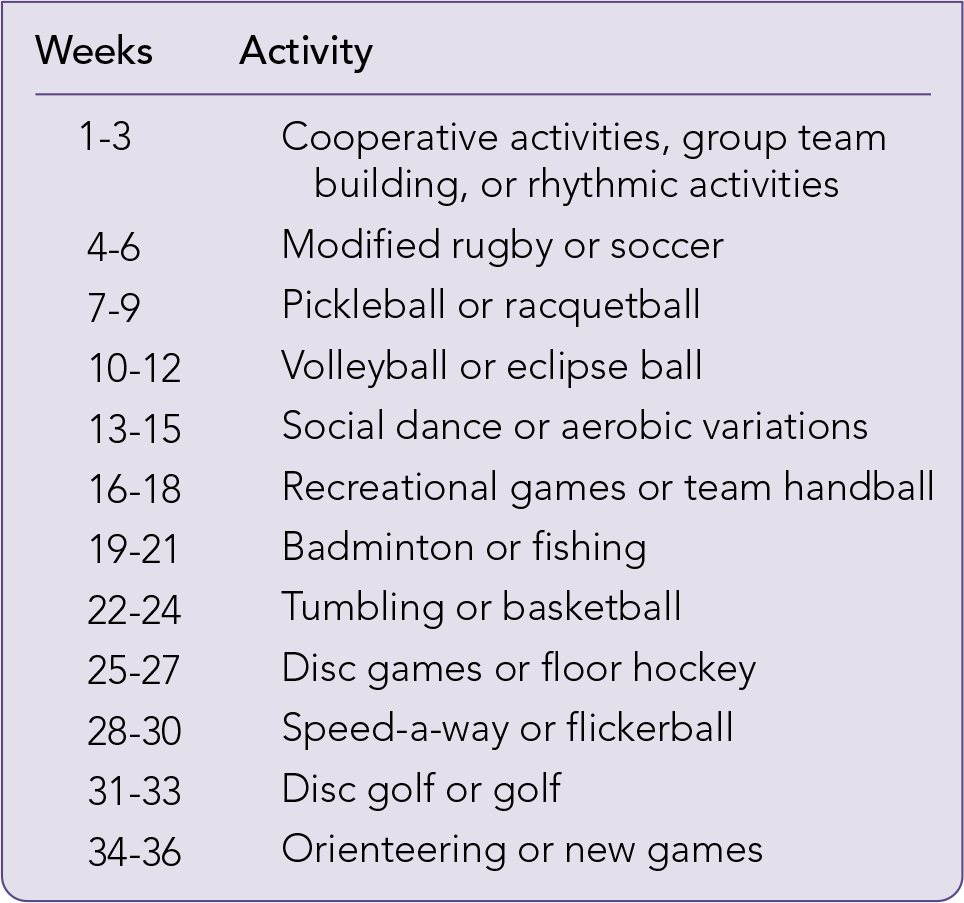Organize physical education activities into units
This is an excerpt from Dynamic Physical Education for Secondary School Students-10th Edition by Timothy A Brusseau,Heather Erwin,Paul W Darst,Robert P Pangrazi.
A yearly plan is developed after appropriate activities have been selected. The purpose of a written curriculum is to ensure that all activities are scheduled and taught. Activities are most often organized into units and then broken down into weekly plans. Weekly plans have three major advantages. First, a comprehensive lesson plan for the week can be developed and divided into the appropriate number of days in the school calendar. Instructional pacing of the content allows students to move along the path of learning at an optimal rate. What cannot be covered one day is taught in the next lesson. Second, less orientation instruction is needed after the first day. Safety factors, teaching hints, and key points need only a brief review each day, and equipment needs are similar from day to day. Third, progression and learning sequences are evident; both teacher and students can see progress.
Determine Length of Activity Units
Activity units can vary in length from two days to a semester. For example, a unit could be a two-day miniunit on juggling or combatives, a two-week unit on disc activities, or a semester-long course on weight training or dance. Developmental levels and interests of students affect the length of a unit, as does the school schedule and the number of days per week that a class meets. The number of class meetings per week is a key factor in deciding the length of a unit. A three-week unit that meets daily offers 15 sessions, whereas a three-week unit that meets twice a week allows only six sessions. Although both are three-week units, the difference in the amount of actual class time for instruction is significant.
Figure 2.8 is an example of an arrangement using short one-, two-, and three-week units (breadth) that offer students 12 to 18 different activities during the year.

Each unit starts with basic skills and strategies and progresses to a point where instruction and skill practice are necessary because students cannot perform adequately. Starting each unit with the easiest activity ensures success and review for all students. Instructional sequences for each day are built on the preceding lesson.
More Excerpts From Dynamic Physical Education for Secondary School Students-10th EditionSHOP

Get the latest insights with regular newsletters, plus periodic product information and special insider offers.
JOIN NOW


